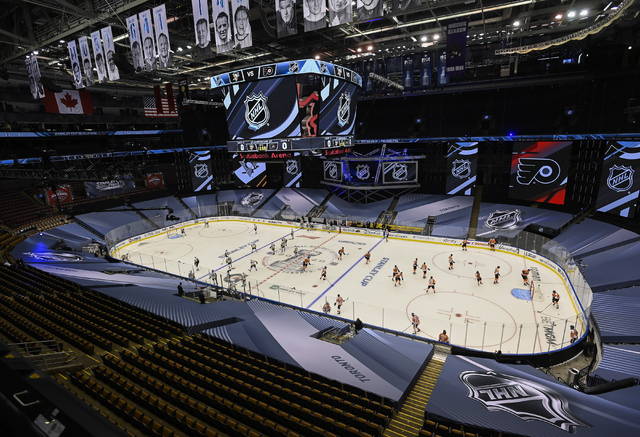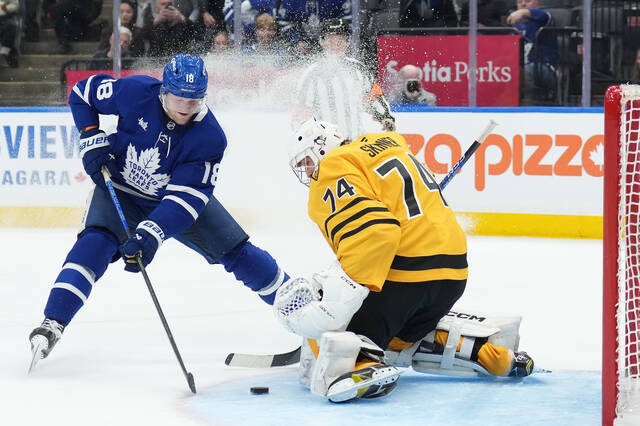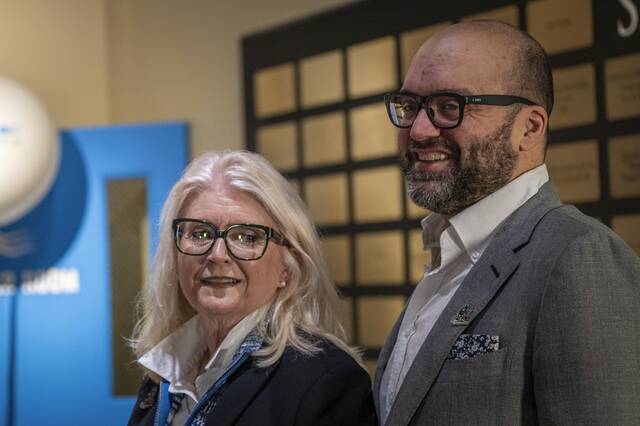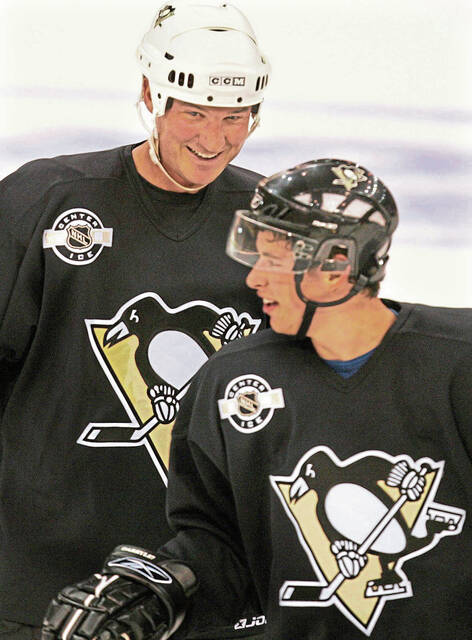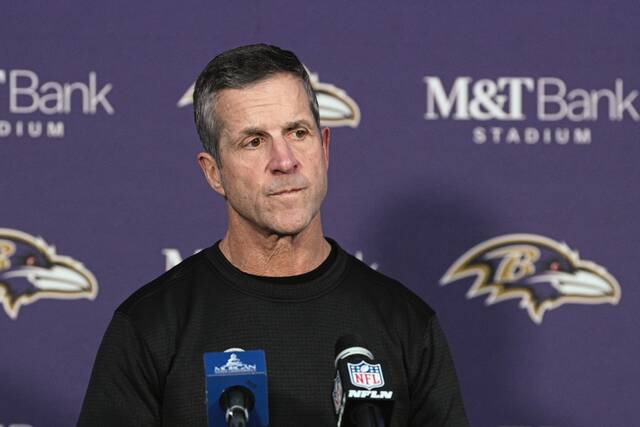Like the 11 other Eastern Conference teams participating in the NHL’s postseason, the Pittsburgh Penguins aren’t allowed to have a morning skate at Toronto’s Scotiabank Arena.
The building is used throughout the course of the day for actual games, and it’s not practical to have another team skate at 10:30 a.m.
Not that the Penguins mind.
They largely have done away with morning skates since Mike Sullivan took over as coach late in 2015.
Out of all the hurricane of surrealism that is the 2020 Stanley Cup playoffs — being orchestrated in two cities during the heat of August and September — the lack of morning skates might be the one bit of normalcy the Penguins can find in any of this.
To paraphrase Dr. Bruce Banner, it’s like they were made for this.
But the connections to anything resembling typical conditions might halt there.
First, the venues.
Scotiabank Arena and Edmonton’s Rogers Place have been retrofitted with video boards and panels in the lower bowls to eliminate any visual elements that would suggest these game are being played in front of empty seats.
Furthermore, ambient but artificial “fan noise” is being broadcast in the buildings during the game.
“It was a little different,” Penguins forward Patrick Marleau said. “But I think once the puck is dropped and you’re in the game, you’re doing everything you can to win. On the bench, you can hear a little bit of the noise being pumped in. But for the most part, we’re just focusing on what we need to do when we get on that ice.”
The ice conditions, which were expected to be less than optimal because of the usage as well as the summer temperatures, have been labeled as mostly adequate based on any public feedback players have offered.
“It was all right,” Flyers forward Sean Couturier said. “It wasn’t the best. But I’ve seen worse in the league at times. It’s the same thing for every team. … It was OK. Playoff hockey, you play in May, June. At some places, it gets ugly. It’s no different here.”
One thing which is vastly different is the mandatory daily testing all players, team employees, referees, league staffers or anyone else with access to the quarantined zone in each city must undergo for the coronavirus.
But after more than a week of testing, that invasive practice has become somewhat routine.
“We test every day,” Penguins defenseman John Marino said. “Take our temperature. Take all the little precautions. It might seem unnecessary at times, but you want to be safe. So far, it’s not a hassle. (The NHL has) done a great job of organizing everything.”
The NHL claims there have been zero positive tests since NHL teams began arriving at their hub cities July 26.
For the most part, the Penguins claim to be largely oblivious to the factors that have made this such a unique undertaking.
“We don’t even discuss that stuff,” Sullivan said. “We talk about the things that we can control. Our guys have done a great job of keeping the focus where it needs to be and that’s on the hockey.”
The reality of poor ice, however, doesn’t escape their radar.
“The only thing with respect to the ice is concerned is sometimes we have a discussion if it breaks down in the second half of a period or as the game wears on, just to simplify the game a little bit and maybe shoot the puck more instead of looking for that next pass,” Sullivan said. “Because for obvious reasons, sometimes when the ice conditions do break down, it makes it a little bit more difficult.
“But our guys have done a great job of focusing on what they can control and not worry about the other stuff.”


